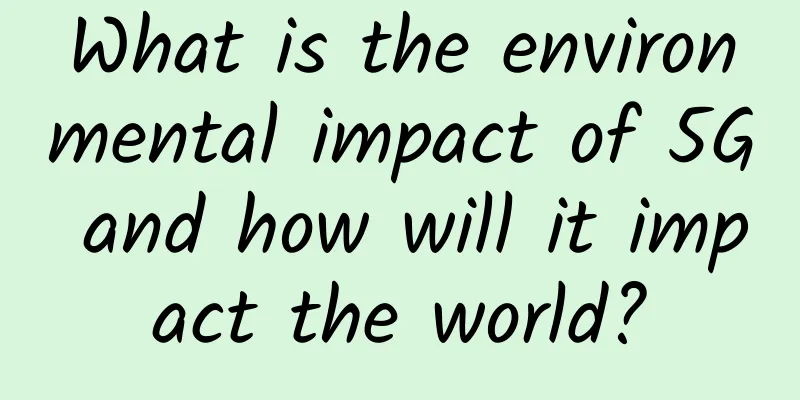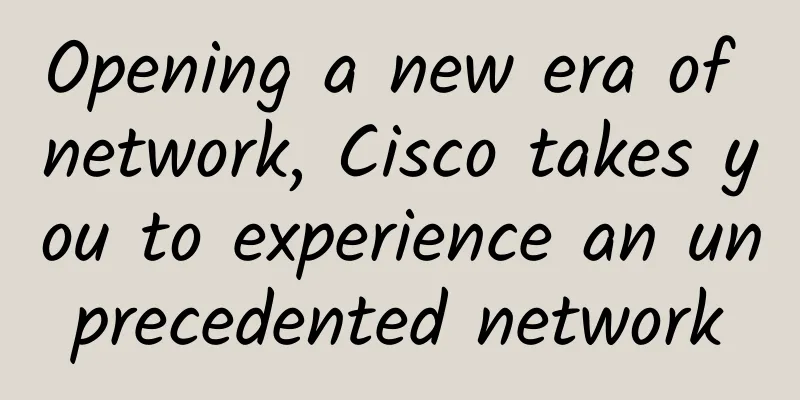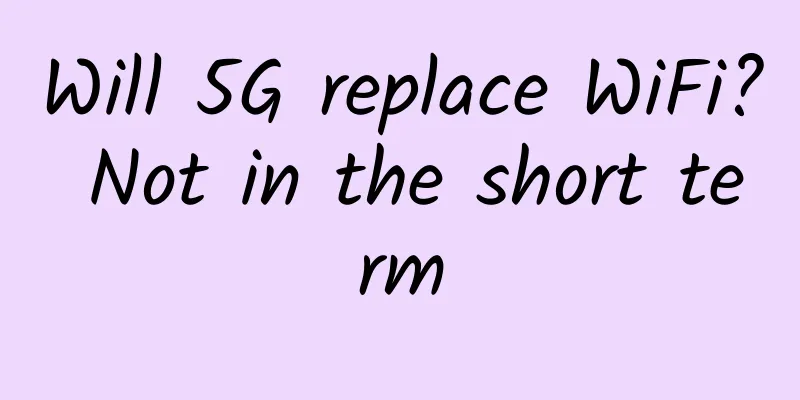What is the environmental impact of 5G and how will it impact the world?

|
In recent years, commercial real estate owners have paid more attention to making their buildings more environmentally friendly. These efforts include using wireless connectivity to reduce energy use, whether by automating a building’s HVAC system, using “smart” windows or installing lighting systems that stay off when rooms are not in use. Now, the advent of 5G has introduced a new challenge in this area – ensuring that the next generation of wireless connectivity has a positive impact on the environment. Fortunately, many companies have already begun taking action to ensure that 5G wireless networks are a friend, not a foe, to the environment.
How does 5G affect the environment?Like many technological advances, 5G can have both positive and negative impacts on the environment. Let’s start with the positives. As mentioned previously with CRE owners, 5G can help reduce energy consumption. Combined with the Internet of Things (IoT), 5G networks will allow devices to automatically turn on and off when in use. At the same time, appliance sensors, transportation networks, buildings, factories, streetlights, and homes can monitor and assess their energy needs and consumption in real time and optimize their energy use on the spot. For example, according to the Columbia Climate School, smart meters in the Empire State Building reduced its energy costs by 38%. Reducing building energy consumption is just one way 5G networks will impact the environment. Here are a few other ways 5G will have an impact on the environment — both good and bad. Reducing greenhouse gas emissionsIf 5G networks reduce energy use, greenhouse gas emissions will also decrease. For example, GE’s digital power plant software can reduce carbon emissions by 3% per year and reduce fuel use by 67,000 tons of coal. A study by Ericsson predicts that by 2030, the Internet of Things can reduce carbon emissions by 15%. Additional energyIf a city’s main grid fails, 5G and IoT can bring microgrids online, making it easier to integrate intermittent renewable energy sources like wind and solar into the grid. The Columbia Climate School noted that Massachusetts-based Ameresco replaced an old steam plant with an automated plant that has 20,000 solar modules and its own microgrid that supports the U.S. Marine Corps Recruit Depot in Parris Island, South Carolina. The new system reduced the company’s energy use by 75 percent. Reducing vehicle emissionsTechnology has helped many businesses continue to operate during the COVID-19 pandemic. Reliable wireless connections have enabled workers to stay connected through video conferencing platforms like Zoom. 5G will not only enable communications outside the office, but it will also reduce the need for as many people to drive to the office or fly for business trips. More people conducting business from home means fewer greenhouse gas emissions from vehicles and aircraft. Meanwhile, if someone is driving, 5G can still help protect the environment. Sensors and cameras running on 5G networks can use real-time data to keep traffic moving and change traffic lights to prevent delays. Reducing traffic congestion and idling can help reduce fuel use and vehicle emissions. For example, Carnegie Mellon University’s Metro21: Smart Cities Institute’s smart traffic control system uses radar and cameras to reduce idling, resulting in a 20 percent reduction in greenhouse gas emissions in Pittsburgh. 5G networks can also help drivers locate parking spaces or enable ride-sharing services, reducing the number of cars on the road searching for parking. How is 5G harmful to the environment?Many new technologies have drawbacks. 5G is no exception. Although 5G can save energy in many ways, it may lead to more energy consumption and emissions. Currently, information and communication technology accounts for about 4% of global electricity consumption and 1.4% of global carbon emissions, according to the Information Technology and Innovation Foundation. These are not huge numbers, but the urgency of 5G will lead to more mobile users, according to a report from Ericsson. The company expects 5G users to exceed 2 billion by 2025, and it expects there will be 5.8 billion mobile users worldwide by then. Meanwhile, the number of IoT devices worldwide will reach 125 billion by 2030. If these predictions are correct, information technology will account for 20% of global electricity consumption and produce 14% of global greenhouse gas emissions by 2040. Any systems put in place will need to be more energy efficient for additional reasons. Otherwise, 5G will do more harm to the environment than good. Don't forget data storage centers—they consume a lot of energy, too; almost 80 percent of the network's total usage. About half of that is used to keep the equipment cool, according to the Columbia Climate School. Moreover, U.S. data centers consumed 70 billion kilowatt-hours (kWh) in 2014, and that number is only going higher—it was expected to reach 73 billion kWh last year. Meanwhile, small cell base stations can consume three times as much power as 4G base stations. New networks, new products, more wasteSome newly released phones support 5G, but many users may need to buy new devices if they want 5G access. A surge in the purchase of new 5G phones could lead to more greenhouse gas emissions. In addition, manufacturing more IoT devices, phones, and small batteries will lead to more mining and the use of large amounts of non-renewable metals that are difficult to recycle. In addition, if customers buy a 5G-enabled phone, they may throw away their old device unless there is some kind of recycling or buyback program available to them. Otherwise, sales of 5G phones will exacerbate the current e-waste problem. How can 5G be environmentally friendly?Fortunately, many companies are already looking at how to ensure 5G networks have a positive impact on the environment. For example, telecom equipment company Huawei recently expressed its desire to build a "greener" 5G network. The company also released a white paper last year, "Green 5G: Building a Sustainable World," which explores what governments, mobile network operators, industry and regulators can do to achieve sustainable green 5G. Some tips included are:
“The planet is facing a climate emergency that, if not addressed urgently, will threaten every aspect of life,” Huawei said in the white paper. “Deploying 5G at a time when energy efficiency is a matter of life and death, it can play an important role in helping every industry achieve its sustainable development goals by enabling it to change its processes and behaviors. "The increasing use of technologies such as cloud computing and mobile connectivity supports new experiences in all aspects of business and personal life, but these benefits must be delivered without any adverse impact on the environment. National and international policies are aiming to dramatically increase energy efficiency and shift dramatically away from fossil fuels to renewable energy sources such as solar, wind and water. This will require a completely new approach to energy use that every industry and individual must adopt. This is where 5G becomes an important enabler." Consumer electronics company Nokia also recently laid out its more sustainable 5G vision. Last year, Nokia published Future Flash: Life in 2030, How 5G Will Change Our Lives in the Next Decade, which not only looks at the future technology that will be powered by 5G connectivity, but also looks at ensuring that the fifth generation of wireless technology "introduces the principles of equality, trust, sustainability and people-centeredness." The white paper acknowledges that global decisions about 5G implementation and how it will power the world are too big for any one government, industry or business to make alone. Instead, civil society, industry, government, academia, organizers and politicians must work together:
“5G will fundamentally improve our lives by powering the Fourth Industrial Revolution,” said Karoliina Loikkanen, Head of Sustainability at Nokia. “But with great power comes great responsibility. We call on businesses and governments to join Nokia in acting responsibly as we roll out this life-changing technology. Our choices must promote equality, put people first, maintain and strengthen digital trust, and ensure sustainability.” Finally, Ericsson partnered with MIT Technology Review to create the Decarbonizing the Industry with Connectivity and 5G white paper. The paper examined how senior technology, business, and renewable energy executives can use cellular technology to achieve environmental sustainability and operational efficiency goals. The report concluded that cellular infrastructure “is a unique and fundamental enabler of decarbonization efforts.” According to MIT Technology Review, more and more companies are using smart systems supported by digital mobile networks to closely monitor, manage and reduce energy and resource consumption levels. “Combining the analytical capabilities of individual companies into system-wide solutions will allow these decarbonization benefits to grow exponentially across the industry,” the report said. “At both the individual company and industry level, cellular networks are often the infrastructure solution best positioned to deliver these resource management capabilities.” Furthermore, mobile broadband infrastructure will facilitate the decarbonization efforts of players in the energy, industrial or transport sectors by:
“5G-enabled cellular networks are the clear enabler of each of the so-called ‘four Ds’ of renewable energy: decentralization, decarbonization, digitalization, and, increasingly important for this rapidly changing entrepreneurial space, democratization,” said Professor Antonello Monti of RWTH Aachen University. |
<<: The third quarter data is out. Are the three major operators standing still or accelerating?
>>: Learn more about Zero Trust Network Access (ZTNA)
Recommend
RTE2022 will open on November 1st. Agora releases the first professional book in the RTE industry, "Real-time Vientiane"
On October 27, the RTE 2022 Real-time Internet Co...
ENOs and Private LTE: Intelligent Connectivity for Smart Factories
Manufacturing processes and operations are underg...
Inspur Networks launches new Wi-Fi 6 products to enable the era of fully “wireless” IoT
On June 22, Inspur Networks held a Wi-Fi 6 new pr...
AnalyticDB PostgreSQL teaches you how to implement distributed consistent backup and recovery
1. Background AnalyticDB for PostgreSQL (ADB PG f...
Let’s talk about the brief history of world communications
This article is reprinted from the WeChat public ...
Behind Baidu’s keyword search: Be aware of fraud risks and borrowing costs being raised in disguise?
[[387830]] Has Baidu failed to fulfill its duty i...
Internet of Things, AI: Seven major trends that will reform enterprise IT in 2018!
I have said in recent articles that 2018 will be ...
Communication styles in microservices architecture
In a microservices architecture, communication is...
The future of 5G technology: a world of infinite possibilities
The tech world is abuzz with something really exc...
Talk about the difference between continuous integration, continuous delivery, and continuous deployment
CI needs to have the following: Comprehensive aut...
What systems does weak current system integration mainly include?
1. Computer Network System Engineering In intelli...
Global spending on 5G network infrastructure nearly doubled in 2020
According to the latest forecast from Gartner, gl...
What harm will smog invading the computer room cause? How to protect against it
I believe that everyone is familiar with the conc...
IMIDC server restock: Hong Kong & Taiwan starting from $39/month / Japan server starting from $49/month
IMIDC (Rainbow Network) Hong Kong, Taiwan and Jap...
The intelligent combination of 5G technology and artificial intelligence
5G and AI can find solutions to unsolved problems...



![[Black Friday] RAKsmart: VPS flash sale from $0.99/month, cloud server flash sale from $1.99/month, dedicated server flash sale from $30/month](/upload/images/67cabced032b3.webp)





